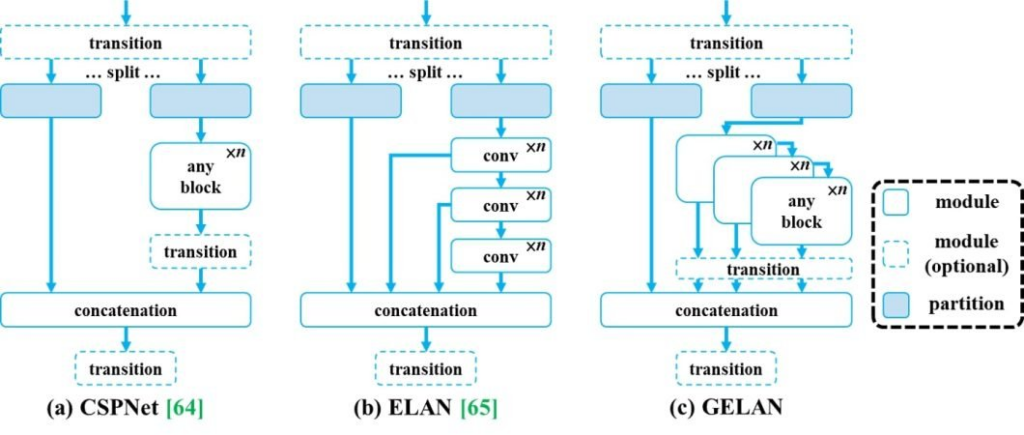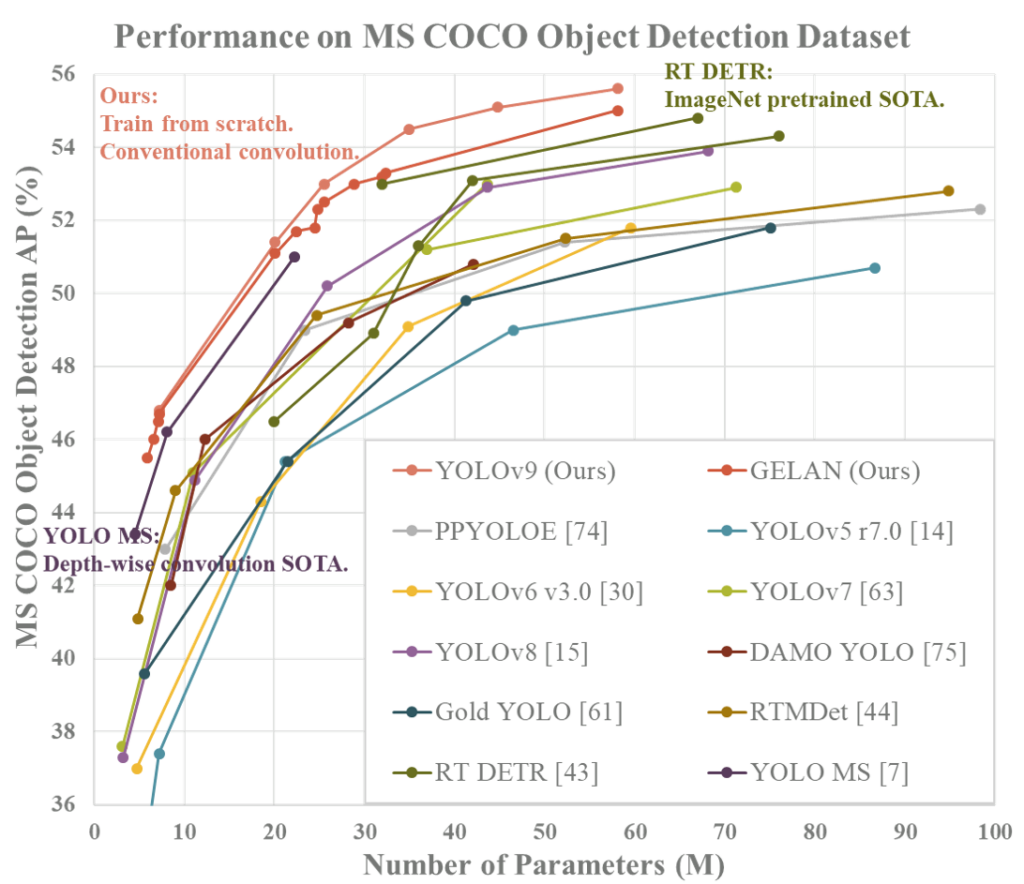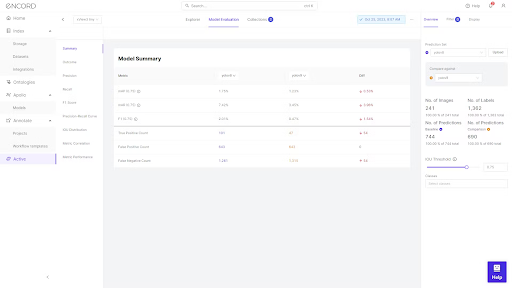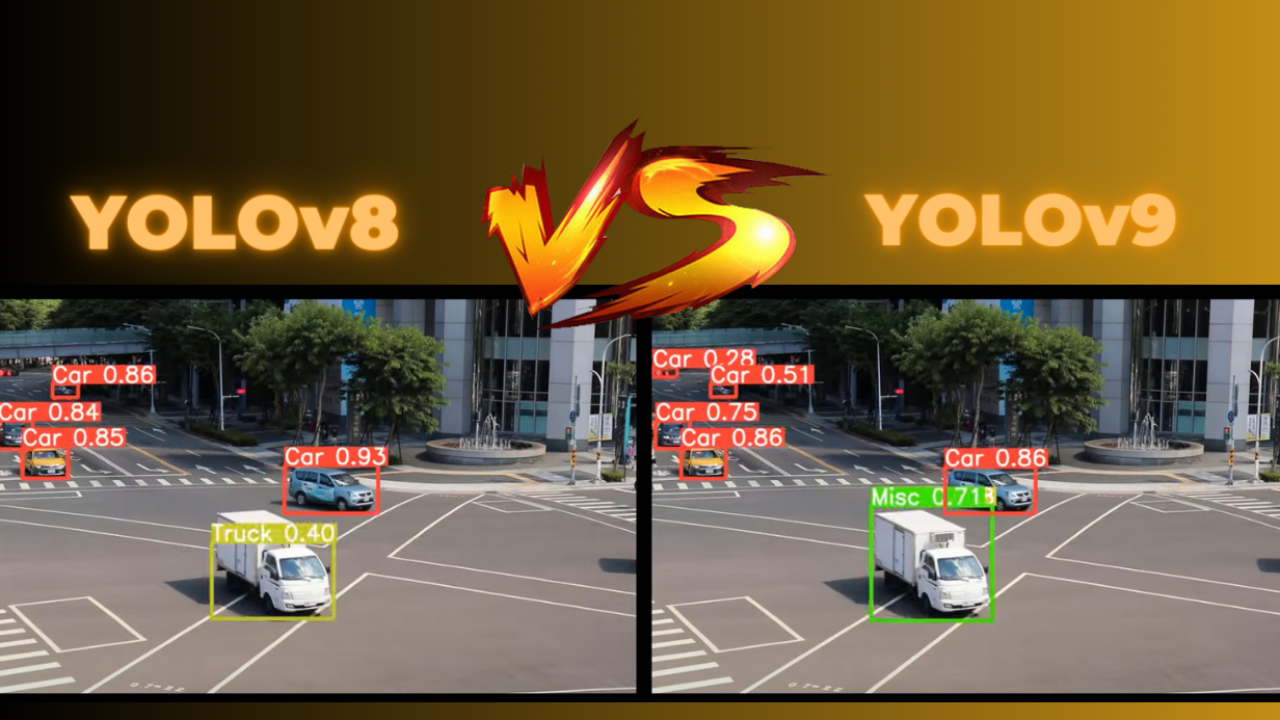Executive Summary:
The dynamic evolution of object detection algorithms reaches a pinnacle with the inception of YOLOv9, a groundbreaking iteration designed to surpass its predecessors in both performance and accuracy. This comprehensive analysis delves into the technical intricacies of YOLOv9, elucidating its architectural innovations and performance enhancements that distinguish it from YOLOv8. By unraveling the core advancements, this article aims to provide a holistic understanding of why YOLOv9 emerges as the undisputed champion in object detection. In this article we will discuss comparison between YOLOv9 vs YOLOv8.
Introduction:
YOLOv9 emerges as a cutting-edge model, boasting innovative features that will play an important role in the further development of object detection, image segmentation, and classification. The new top-tier features allow faster, sharper, and more versatile actions.
Architectural Evolution: YOLOv8 vs. YOLOv9:
The architectural disparity between YOLOv9 vs YOLOv8 underpins the substantial performance gains witnessed in the latter. YOLOv8, while revolutionary in its own right, lacked certain key components that impeded its detection prowess. YOLOv9 addresses these shortcomings through a series of strategic architectural enhancements.
In YOLOv8, the backbone architecture primarily relied on DarkNet-53, a deep neural network consisting of 53 convolutional layers. While effective, DarkNet-53 exhibited limitations in capturing fine-grained features across different scales, particularly for small and occluded objects. YOLOv9 addresses this limitation by integrating a feature pyramid network (FPN) directly into its architecture.
YOLOv9 vs YOLOv8 – What’s Different?
The creators of YOLOv9 introduced a new idea called Programmable Gradient Information (PGI) to solve the problem of losing data during the process of passing information forward. This PGI concept helps generate reliable gradients through an extra reversible branch in the model. This branch works alongside the main task, ensuring that important features aren’t lost. By applying PGI at different levels of meaning, they achieved the best training results. The reversible structure of PGI is included in the extra branch, so it doesn’t add extra cost. PGI also allows for choosing suitable loss functions, solving issues faced in mask modeling. This PGI method can be used in various sizes of deep neural networks.
In their paper, they also developed a tool called Generalized ELAN (GELAN), which considers factors like parameter count, complexity, accuracy, and speed of inference. GELAN lets users pick different computational blocks for different devices for running the model efficiently.

Using PGI and GELAN, they created YOLOv9. They tested it on the MS COCO dataset and found it performed the best in all scenarios. This iteration seeks to outperform both convolution-based and transformer-based methods in object detection. YOLO v9 introduces four models, categorized by parameter count: v9-S, v9-M, v9-C, and v9-E, each targeting different use cases and computational resource requirements
- Programmable Gradient Information (PGI): PGI is a key innovation in YOLOv9, addressing the challenges of information loss inherent in deep neural networks. By integrating PGI, YOLOv9 enhances its learning capacity and ensures the retention of crucial information throughout the detection process, thereby achieving exceptional accuracy and performance. PGI allows for the generation of reliable gradients through an auxiliary reversible branch, ensuring that deep features retain crucial characteristics necessary for executing target tasks. This addresses the issue of information loss during the feedforward process in deep neural networks.
- Generalized Efficient Layer Aggregation Network (GELAN): GELAN is another pivotal component of YOLOv9, designed to optimize parameters, computational complexity, accuracy, and inference speed. By allowing users to select appropriate computational blocks for different inference devices, GELAN enhances the flexibility and efficiency of YOLOv9. This architecture exclusively employs conventional convolution operators, achieving superior parameter utilization compared to state-of-the-art methods that rely on depthwise convolution.
- Performance Enhancements and Technical Insights: key improvement in YOLO v9 over its predecessor is its significant reduction in the model’s size and computational demands, with a 49% reduction in parameters and a 43% reduction in calculations compared to YOLO v8. Despite this downsizing, YOLO v9 manages to improve its Average Precision (AP) on the MS COCO dataset by 0.6%, showcasing its enhanced efficiency and effectiveness in object detection tasks.The performance metrics of the models vary, with the smallest model achieving a 46.8% AP and the largest model achieving a 55.6% AP on the MS COCO dataset validation set. This variation allows users to choose a model that best suits their performance versus computational resource balance.

 (Picture Note: compare the differences in predictions between YOLOv8 and YOLOv9.)
(Picture Note: compare the differences in predictions between YOLOv8 and YOLOv9.)
Conclusion:
In conclusion, while YOLOv8 excels in accurately recognizing objects, its tendency to detect non-existent objects leads to a higher false positive rate. YOLOv9, on the other hand, takes a more conservative approach, resulting in fewer false positives but potentially missing some actual objects, leading to a higher false negative rate. Despite this trade-off, YOLOv9 represents a significant advancement in real-time object detection, thanks to its improved training methods and practices, as well as innovative solutions like PGI and GELAN. These enhancements not only boost efficiency, accuracy, and adaptability but also set a new standard for future research and applications in the field. As the AI community continues to progress, YOLOv9 serves as a testament to the collaborative spirit and innovative thinking driving technological advancements forward.
Frequently Asked Questions
1. What is YOLO in the context of AI and computer vision?
YOLO (You Only Look Once) is a state-of-the-art, real-time object detection algorithm known for its speed and accuracy. It can detect and classify multiple objects within an image in one evaluation.
2. How does YOLOv9 or YOLOv8 enhance ALPR systems?
YOLOv9 or YOLOv8 enhances the ALPR system by providing rapid and accurate detection of license plates from video or image data, making the overall process more efficient and reliable.
3. What is the main difference between YOLOv9 and YOLOv8?
YOLOv9 introduces further improvements in speed, accuracy, and computational efficiency over YOLOv8. While YOLOv8 already enhanced these aspects from its predecessors, YOLOv9 builds on this foundation with more advanced algorithms and optimizations.
4. How does the architecture of YOLOv9 differ from YOLOv8?
YOLOv9 incorporates a more refined architecture that includes improved network layers, better feature extraction techniques, and enhanced data augmentation methods. These changes aim to boost performance metrics such as precision and recall.

Dawood is a digital marketing pro and AI/ML enthusiast. His blogs on Folio3 AI are a blend of marketing and tech brilliance. Dawood’s knack for making AI engaging for users sets his content apart, offering a unique and insightful take on the dynamic intersection of marketing and cutting-edge technology.










